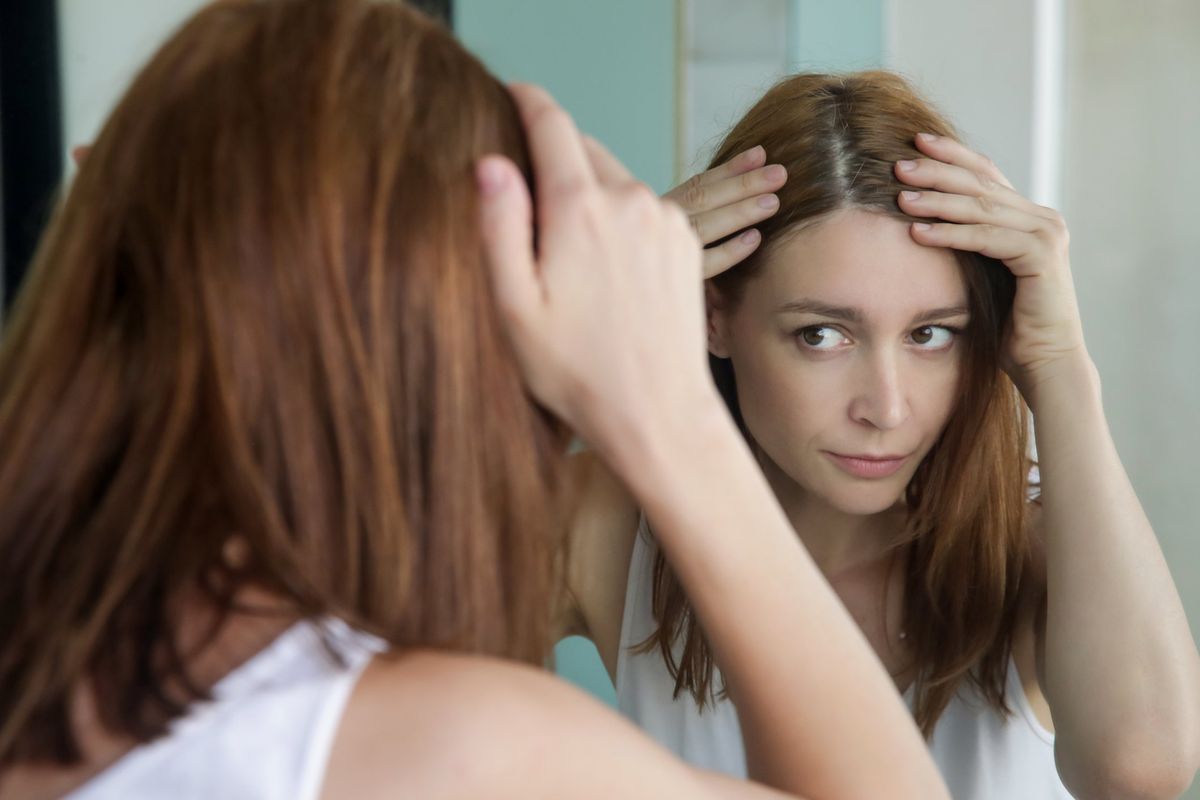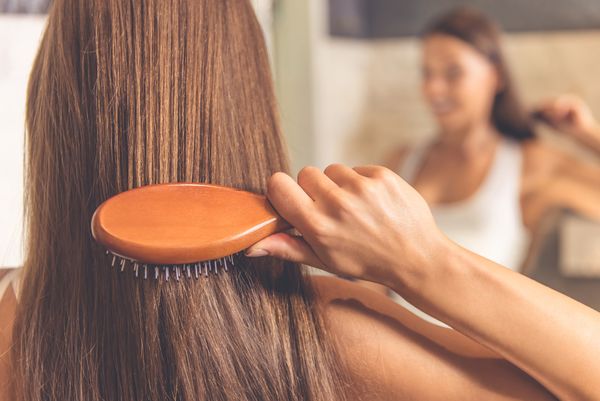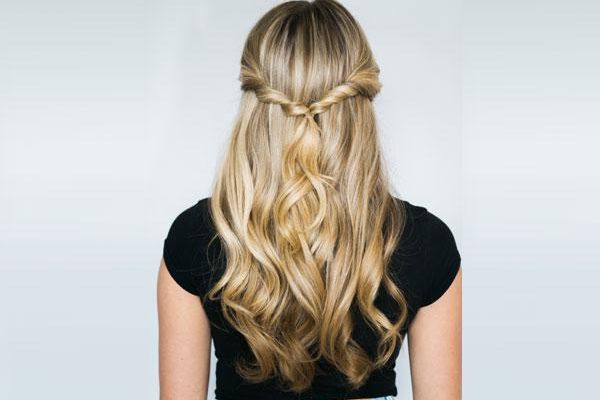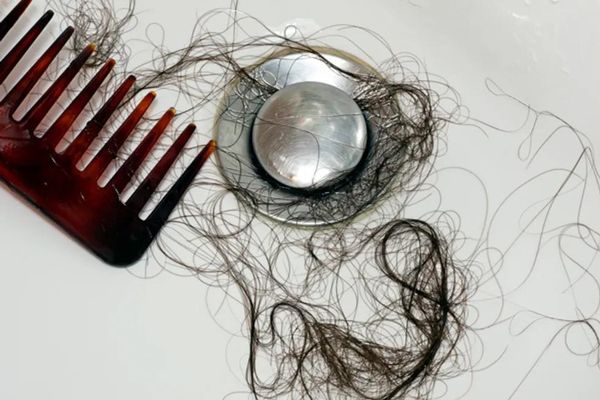Have you ever washed your hair only to find it coming out by the handful? It can be alarming and scary. But, you may be surprised to discover that hair loss among women is more common than you might think. In fact, more than half of all women will experience some hair loss by the time they reach 70. But many are too shy or embarrassed to bring it up to anyone, including their best friend, partner or doctor. The good news is that there are treatments available.
The medical term for any hair loss is alopecia. Symptoms can range from mild to severe and from temporary to permanent, and the term does not just refer to losing all of the hair on one's body, as is commonly believed.
"Don't just hope [your hair loss] will get better on its own and delay seeking care, as there are things you can do early that will help you keep as much hair as possible," said Barb Dehn, a nurse practitioner and member of HealthyWomen's Women's Health Advisory Council.
Why women lose their hair
People typically lose 50 to 100 hairs a day. These hairs are replaced as part of the hair growth cycle, but if your hair cycle is disrupted or hair follicles become damaged or scarred, your hair loss may outpace its growth.
Hair loss can be classified into two categories: non-scarring and scarring.
Non-scarring hair loss
The most common cause of hair loss is a non-scarring form called hereditary thinning or baldness, and it affects about 30 million American women.
Another form of non-scarring hair loss is alopecia areata, which affects as many as 6.8 million people in America.
"This is an autoimmune form of hair loss that can cause small patches of hair loss, large patches of hair loss, or total loss of hair on the scalp or entire body. This tends to occur in younger patients, but can affect older patients as well," explained Dr. Amy McMichael, chair of the Department of Dermatology at Wake Forest Baptist Medical Center. She added that there is promising research into using JAK inhibitors to treat alopecia areata.
Some other causes of non-scarring alopecia include:
- Diet. (An unhealthy diet that is lacking in ample protein, iron, zinc, biotin or other vitamins can cause your hair to fall out at increased rates. Be sure to eat a balanced, healthy diet to stave off hair loss.
- Hairstyling techniques such as tight buns and ponytails, extensions or cornrows
- Underlying medical conditions like polycystic ovarian syndrome (PCOS) or an underactive thyroid gland
- Chemotherapy drugs
- Some acne drugs, certain blood thinners and birth control pills
- Mental or physical stress
Scarring hair loss
Scarring alopecia is a rare disorder where inflammatory cells destroy the hair follicle, replace it with scar tissue and cause permanent damage, including hair loss.
Other, more common forms of scarring hair loss include lichen planopilaris (LPP), when the immune system attacks mucus membranes or skin cells (including on the scalp) and frontal fibrosing alopecia (FFA), which is hair loss on the front of the scalp around the forehead.
Another type, central centrifugal cicatricial alopecia (CCCA), primarily strikes Black women. Although previous studies have linked hairstyling techniques with the disease, an exact causal relationship has not been established and genetics remains the primary factor.
"The hair loss affects the crown of the scalp and often causes itching, tenderness and pain," McMichael said. "It starts as a small area and increases in size over time if not actively treated."
Hair loss treatments for women
Minoxidil
The only female hair loss treatment approved by the U.S. Food and Drug Administration, minoxidil is generally applied to the scalp as a liquid or foam.
"This is the starting point for treating most women with hair loss," said Dr. Elizabeth Liotta, a dermatologist in Frederick, Maryland.
Minoxidil is generally available over-the-counter and must be used every day to produce results. Use caution if you want to stop using it, as it can actually cause hair loss upon discontinuation. Although you don't need a prescription to use Minoxidil, you may still want to consult your doctor first.
Spironolactone
Prescription androgen blocker spironolactone may stop hair loss in female pattern baldness. This is the best hair loss treatment for women with PCOS and those who also have hormonal acne, Liotta said, as this medicine also treats that condition. It can cause birth defects, so you must take steps to prevent pregnancy while taking it.
Laser caps and combs
Laser caps and combs are devices that use low-level laser light to stimulate hair growth. Results are promising, but not everyone who uses these devices grows more hair. These can be used with minoxidil or other female hair loss treatments to improve upon the results, Liotta said.
Steroids
Topical applications or injections of corticosteroids are often used to counter the effects of autoimmune diseases that cause hair loss. These can be extremely effective treatments for alopecia areata and some types of scarring hair loss.
Finasteride
The finasteride pill is only approved for male hair loss, but it can be prescribed for women. Because of the drug's risks of causing birth defects, it's typically prescribed to women who are postmenopausal. It works by slowing down hair loss and boosting new hair growth and takes about four months to produce a change.
Special shampoos
Some shampoos may help regrow hair, including 2% ketoconazole (an anti-fungal shampoo), as well as zinc-, selenium- or coal tar-based shampoos. How these shampoos boost hair growth isn't fully understood, but they tend to work better when combined with other hair loss treatments such as laser caps or minoxidil.
Platelet rich plasma (PRP)
With this latest treatment, the patient's own blood is drawn and the PRP is separated and then injected back into the affected areas of hair loss.
"Initially used only for female and male pattern hair loss, it's now being used in the treatment of alopecia areata and central centrifugal cicatricial alopecia. This is a treatment where many physicians are working on ways to maximize the yield of platelets in the PRP to improve outcomes," McMichael said.
You're not alone
Hair loss can result in feelings of embarrassment, shame or even depression. It may help to know that you're not alone. Remember, more than half of women will experience hair loss at some point in their life. If you're losing hair and feeling distress, it may help to find a local in-person support group or an online forum where you can connect with other women in the same situation.
Resources
American Hair Loss Association
- Menopause and Hair Loss ›
- Is It Female Pattern Baldness—or Normal Hair Loss? - HealthyWomen ›
- Hair Loss Affects Many Aspects of Life ›
- How I Learned to Love My Bald Self - HealthyWomen ›
- The Fix for Itchy Scalp - HealthyWomen ›
- Alopecia Areata: Losing Your Hair? Don’t Despair - HealthyWomen ›
- Women With Alopecia Don't Have to Live Without Brows and Lashes - HealthyWomen ›
- Hair Loss in Women - HealthyWomen ›
- 7 Foods for Healthy Hair - HealthyWomen ›







